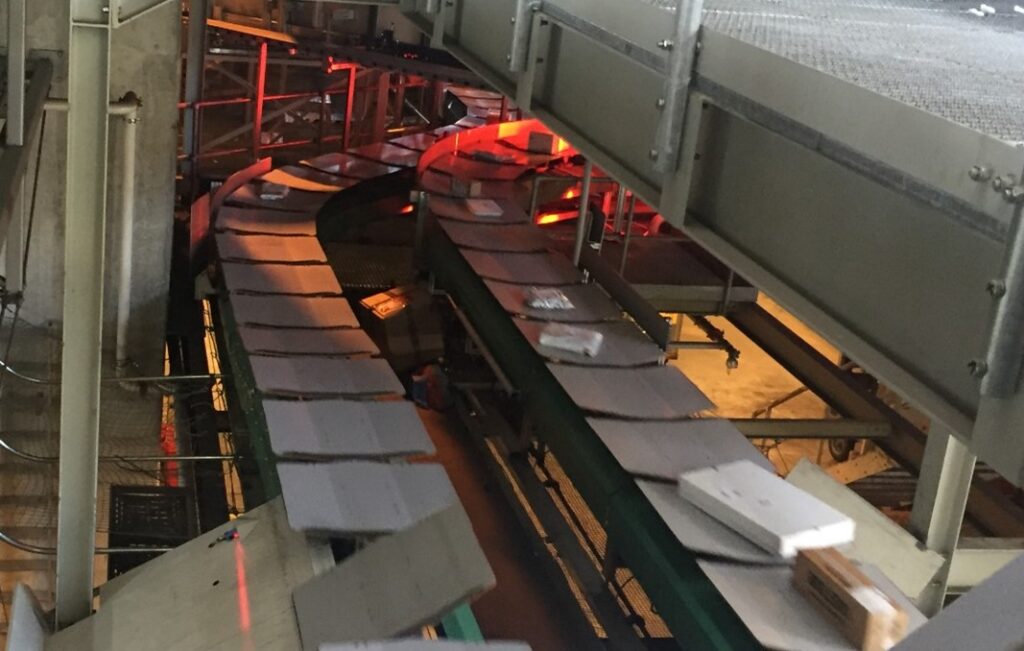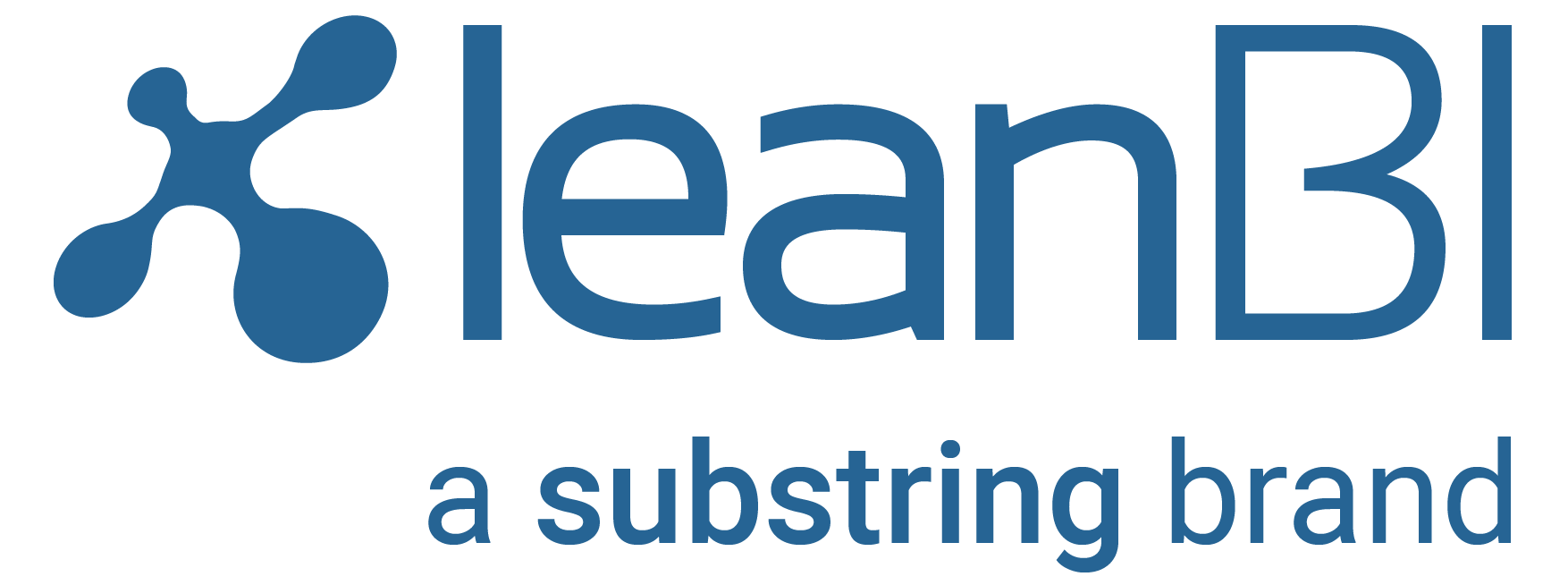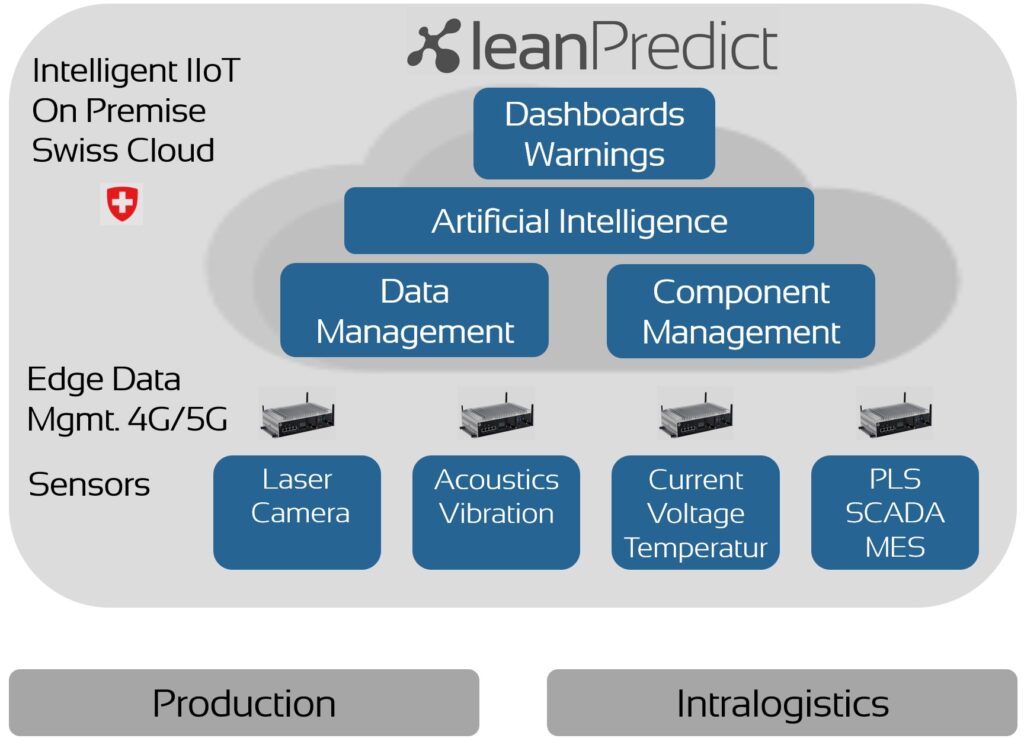Retrofit 4.0 of existing production systems
Modernization of existing production plants with new sensor technology and artificial intelligence
Digital Twins as digital images of production plants and Smart Factory approaches have been the talk of the town for many years. Nevertheless, such implementations are still the exception rather than the rule. This is not because machine manufacturers are not doing their homework. New generations of machines have various sensors and IIoT interfaces to offer new digital services. But this only partially meets the needs of the manufacturing industry.
In a production plant and subsequent intralogistics, machines have a service life of 20, 30 years and more. The first thing to be replaced is usually the control system, but this replacement is still a long way from the smart factory approach. Existing machines should continue to be operated as long as it makes technical and economic sense.
The central role of sensor technology
In order for existing plants to develop in the direction of the Smart Factory, the following goals must be implemented (Retrofit 4.0):
- Using data and underlying sensor technology to detect failures at an early stage in order to minimize downtime, known as Predictive Maintenance.
- Using data and underlying sensor technology to continuously improve the logistics and production process in order to increase the efficiency of the processes in a forward-looking manner – we call this Predictive Performance.
- To keep the quality of the products consistently high despite the variety and increase in variants in the production process with data and underlying sensor technology – we call this Predictive Quality.
For all these goals of Retrofit 4.0 at the existing production plants, the sensors, the data generated thereby and the data analytics based on them play the central role. Fortunately, the costs for sensors, IIoT, data storage and analytics have been reduced by factors over the last 5 to 10 years. So it is currently worthwhile to retrofit existing plants with new sensor technology. Not all at once, but in order of importance and in phases, just as LeanBI has developed the process methodology in many successful projects.
In addition to conventional vibration, temperature and current measurement technology, LeanBI uses new optical and acoustic sensors in the Smart Factory area. Both sensor types are excellent technologies for predictive maintenance, predictive performance and predictive quality. IIoT and digital twin are not the goal, but only a means to an end.
LeanPredict increases performance of intralogistics systems
This modern sensor technology was used, for example, to detect signs of wear on tilt tray sorters in an intralogistics system. For this purpose, the various systems were equipped with optical and acoustic sensor measuring points at one point. The acoustics of the tilt tray change with increasing wear, and mechanical deformations are also immediately detected by the optical sensor. The sensor data is processed on an industrial PC near the plant and continuously transmitted to LeanBI AG’s LeanPredict platform. The data stored in the cloud is analyzed by Artificial Intelligence, for which LeanBI has trained separate machine learning models for many defects. About 20 features are the input parameters for the respective models.
This results in a quality measure with an associated defect value for each wagon and passage at the measuring point. If there is a massive deviation, the wagon must be inspected within 24 hours. A message is sent to the person responsible for the system, a dashboard shows additional information, or a service order is automatically triggered in the maintenance tool.

Picture: Tilt tray sorter of an intralogistics system
Continuous improvement thanks to Artificial Intelligence
Such machine learning models, collectively referred to as Artificial Intelligence, solve different Smart Factory use cases for Retrofit 4.0:
- They can detect quality problems on the machine or product within fractions of a second by image recognition. Depending on the use case, complex 3D systems or very inexpensive cameras are used.
- Image recognition evaluates the quality of execution in the case of manual interventions by production personnel.
- Image recognition supports the traceability and tracking of educts and products in the production process.
- Acoustics evaluates anomalies at the components or can globally uncover inefficiencies in production.
So this is much more than just being able to determine damage and wear on the machines in a contactless and cost-effective way, as we demonstrate in our specific case of the intralogistics system:
If the quality measure has not yet reached the threshold value, there is a slight defect and the wagon is monitored further. If the damage increases over the days or if there is a larger amount of such minor defects, then a scheduled inspection and maintenance takes place on these wagons. Scheduling maintenance in smaller units throughout the year takes pressure off the maintenance staff, improves diagnostics, reduces work in the major maintenance cycles, and improves the quality rate of sorted parcels. Each detected anomaly is added to the data collection and contributes to the training of the neural network. As a result, the performance of the plant is even constantly improving.
LeanPredict as a technical solution
LeanBI has further developed the LeanPredict framework over various successful smart factory projects. It includes a set of sensors, on-site data processing in an IIoT environment and data analytics based on various machine learning models in the LeanBI Cloud.
Image: LeanPredict framework with connectors
The solution can be set up in a network completely separate from the production. Or the framework can be integrated into the closed production environment so that no data need leave the production network. Either way, the solution is coherent with our customers’ IT security, a must-have criterion for all manufacturers.
More flexibility for plant operators
The pressure to increase efficiency for plant operators will continue to increase. In addition to the well-known goals such as time and cost savings and quality improvement, further flexibilization of production is becoming more important. The successful implementation of this transformation requires from companies to make significant investments in adapting or expanding their production infrastructure. The introduction or expansion of innovative, digital, efficient and ecologically sustainable solutions such as LeanPredict thus contributes to accelerating the upcoming transformation process cost-effectively.
- Merger of Substring and LeanBI - December 31, 2023
- Blog: New optimization potentials thanks to AI and physical models - July 14, 2023
- Blog: Acceleration of development through AI and physical models - June 20, 2023


